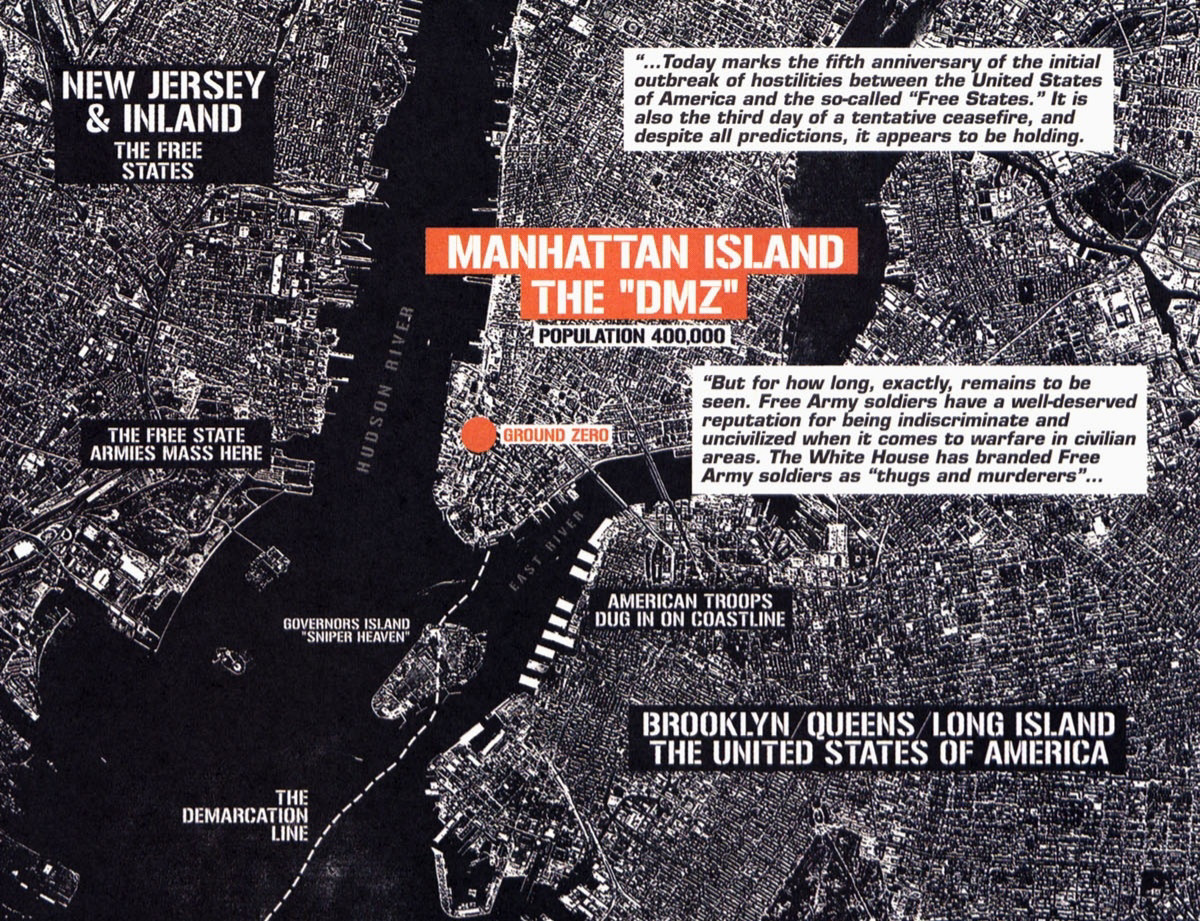
Frequently talked about in the years preceding DMZ's publication was Halburton, an oil services company that received lucrative contracts and "sweetheart" deals, and whose former CEO was the sitting vice president, Dick Cheney. Haliburton, of course, was hardly the only American corporation profiting off efforts to rebuild Iraq. And reconstruction efforts weren't the only thing enriching American companies.
Military contractors were a significant part of the United States' presence in Iraq. In 2007 the Defense Depart concluded that almost 160,000 private contractors were employed in Iraq (roughly equal to the number of U.S. troops in the country at the time). With American military forces in both Afghanistan and Iraq it was necessary to supplement their numbers. In 2007, several months after this story arc was published, the military contractor Blackwater was involved in an incident that became known as the Nisour Square Massacre.
Given all that, it makes for these subjects to be explored in the series. And it's not really inappropriate to make an unambiguous judgment about them. At a certain point, though, criticism becomes farce.













